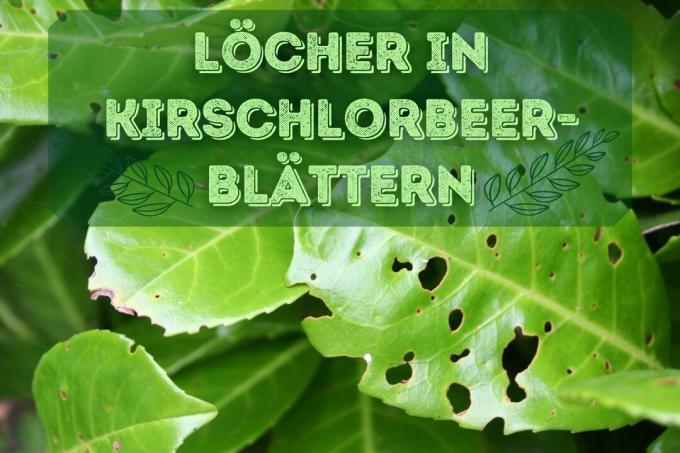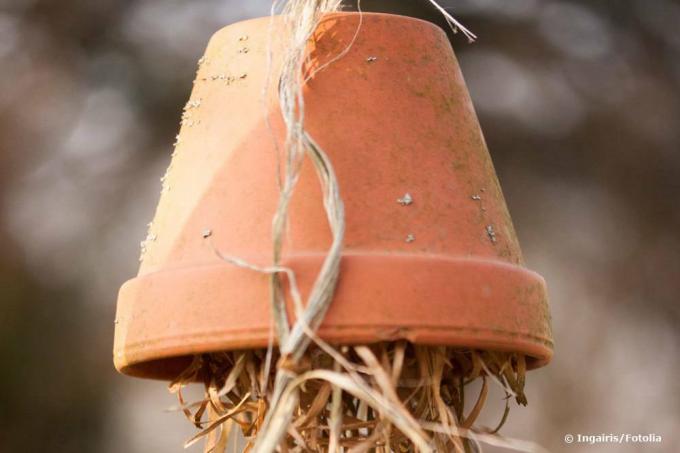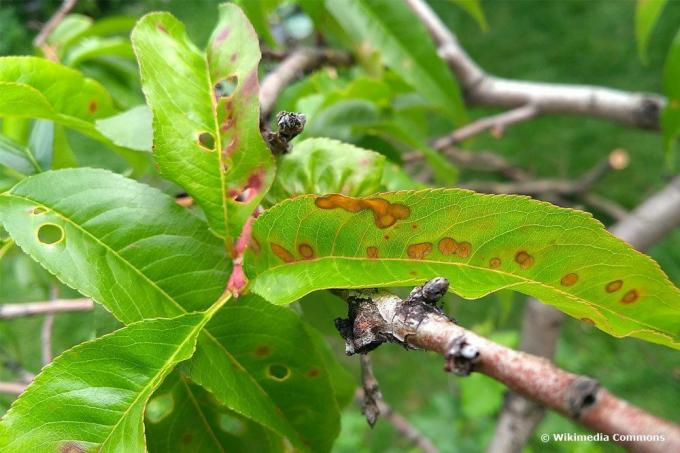
table of contents
- Signs of infestation
- Pests as the cause
- Fight gently
- Set up traps
- Prevention of pests
- Diseases as the cause
- frequently asked Questions
If there are holes in the leaves or eaten leaves of the cherry laurel, several pests and diseases can be responsible. Fighting them gently is possible by a few means.
In a nutshell
- not only insects can prove harmful
- Damage and discoloration can be the cause of illness
- Fighting the causes gently is also beneficial for the cherry laurel and the environment
- numerous suitable means are available
- Targeted and timely action is critical to rescue
Signs of infestation
Possible indications of an infestation with parasites or pathogens are the following signs:
- frayed leaf margins
- yellow to brown discoloration
- Holes in the leaves
- deformed foliage
- withering or withering shoots
- increasing stunted growth
So it's not just holes in leaves that indicate parasites or germs. Any restriction or deviation from a healthy appearance can represent symptoms. Care errors are also a possible trigger.

Pests as the cause
Although several larvae, beetles and other insects are possible pests on the cherry laurel, the vine weevil is most often responsible for the holes in the leaves. The adult beetles feed on the green. The larvae, however, are initially in the ground and then migrate upwards. They initially feed on the roots and later on the bark.
An infestation can be recognized by the following signs:
- pitted leaves
- affected leaves turn yellow
- Cherry laurel dies
However, the insects themselves are difficult to recognize and find, even with regular controls. Because the adult beetles are only up to one centimeter long and have a dark gray to black color. The main thing, however, is that they are nocturnal and hide during the day. Checks for the pests should therefore be carried out either very late in the evening or very early in the morning.
Tips: Although the damage caused by the beetles may be annoying and visually disturbing, the larvae pose the greatest danger. Because they feed on the roots, the cherry laurel can absorb less water and nutrients over time, even if these are present in sufficient quantities in the substrate.
Fight gently
The control must be carried out as quickly and thoroughly as possible due to the possible damage to the root ball. As soon as adult beetles are found on the cherry laurel or their signs, you have to expect eggs and larvae in the soil.

The following guide shows how this is possible.
-
Collect beetles: The adult insects have to be collected. Otherwise, they not only cause major damage to the animals, but can also lay further eggs. Again, the early morning hours or late evening are recommended for this. The measure should be repeated for several days in order to eliminate as many animals as possible.
-
Remove leaves: You should cut off the damaged foliage to achieve several advantages. On the one hand, the plant benefits optically from it. On the other hand, entry portals for pathogens are removed.
-
Remove earth: Since the eggs and larvae are in the soil, the substrate must also be removed. The excavation should be as far and deep as possible. However, caution is advised so as not to damage the roots additionally.
-
Pruning root: If the root ball is damaged, the damaged areas should be clipped cleanly. This reduces the risk of rot and makes the roots more receptive.
-
Spreading nematodes: In order not only to avoid pitted leaves, but also to prevent them in the future, nematodes are useful. The roundworms penetrate the larvae and destroy them from the inside. If there are no more larvae of the black weevil, the nematodes also die. They can be purchased from specialist retailers or online and should be brought into the ground directly with the irrigation water.
- Administer nutrients: Since the pests weaken the plant and not only produce eaten leaves, fresh, nutrient-rich soil and fertilization make sense.
Tip: It is often recommended to dispose of the earth with the organic waste. It is better, however, to kill the parasites with heat or to pack the substrate into the residual waste. Otherwise they will spread again directly.
Set up traps
If you want to make collecting the beetles easier or want to increase the success rate, you can set up traps. For this purpose, clay flower pots filled with wood wool are placed with the opening facing downwards right next to the respective plants.
The beetles use the pots as a place to sleep and can therefore be easily removed during the day.

Prevention of pests
If you want to reduce the chance of an infestation with pests that cause holes in the leaves of your cherry laurel, preventive measures are recommended. For this purpose, the garden should be designed as natural and animal-friendly as possible. Because this attracts the natural predators of the beetles and other pests. These are birds, hedgehogs and other insects.
Suitable measures include:
- Build an insect hotel
- Leave piles of leaves lying around
- Build a natural stone wall with gaps
- Hang up nesting boxes
- Plant diversity and mixed cultures
- Offer birdseed
- Set up bird baths
A good way to design the garden close to nature and at the same time well cared for is to create a "overgrown" corner. The grass is left uncut and a pile of wood can be offered. A garden pond or pool for toads and frogs is also on. In addition, the use of pesticides should be avoided. Because the means for killing the insects also fight beneficial insects, which ensure a balance.
Diseases as the cause
Seemingly pitted leaves or holes in the leaves of the cherry laurel can also be the result of the so-called Shotgun Sickness be. However, the course is different here than in the case of an infestation with pests. The leaves initially show yellow to brown point-like discoloration. These can overflow into one another. Over time, the dried up parts of the leaves often fall off or break out, leaving holes in the leaves. These can act like feeding marks.
However, it is a fungus that causes shotgun disease. Several steps are required to treat this in a targeted manner.

-
Remove affected shoots: You should remove already infected and discolored leaves with clean scissors. It is best to cut these off directly on the trunk.
-
Eliminate leaves: Leaves that have already fallen off must also be collected so that the spores do not continue to spread. The same rules apply for disposal as for the cut leaves and shoots.
- Use fungicide: In order to completely destroy the germs, an appropriate agent against harmful fungi should be used. Follow the manufacturer's instructions.
Tip: When disposing of the leaves and twigs, make sure that they are neither put in the organic waste nor on the compost. Otherwise the spores will keep spreading anew.
frequently asked Questions
Insects and their larvae as well as domestic animals and other mammals can cause holes. Anyone who is unsure and keeps finding frayed leaves can carry out controls using a wildlife camera.
Experience has shown that appropriate fertilization and watering make sense to take care of the weakened plant. However, these measures should only be carried out slightly and at different times so that there is no risk of chemical burns or waterlogging.
Because, on the one hand, these protect beneficial insects and thus prevent further pests. On the other hand, they are safer for the environment.
